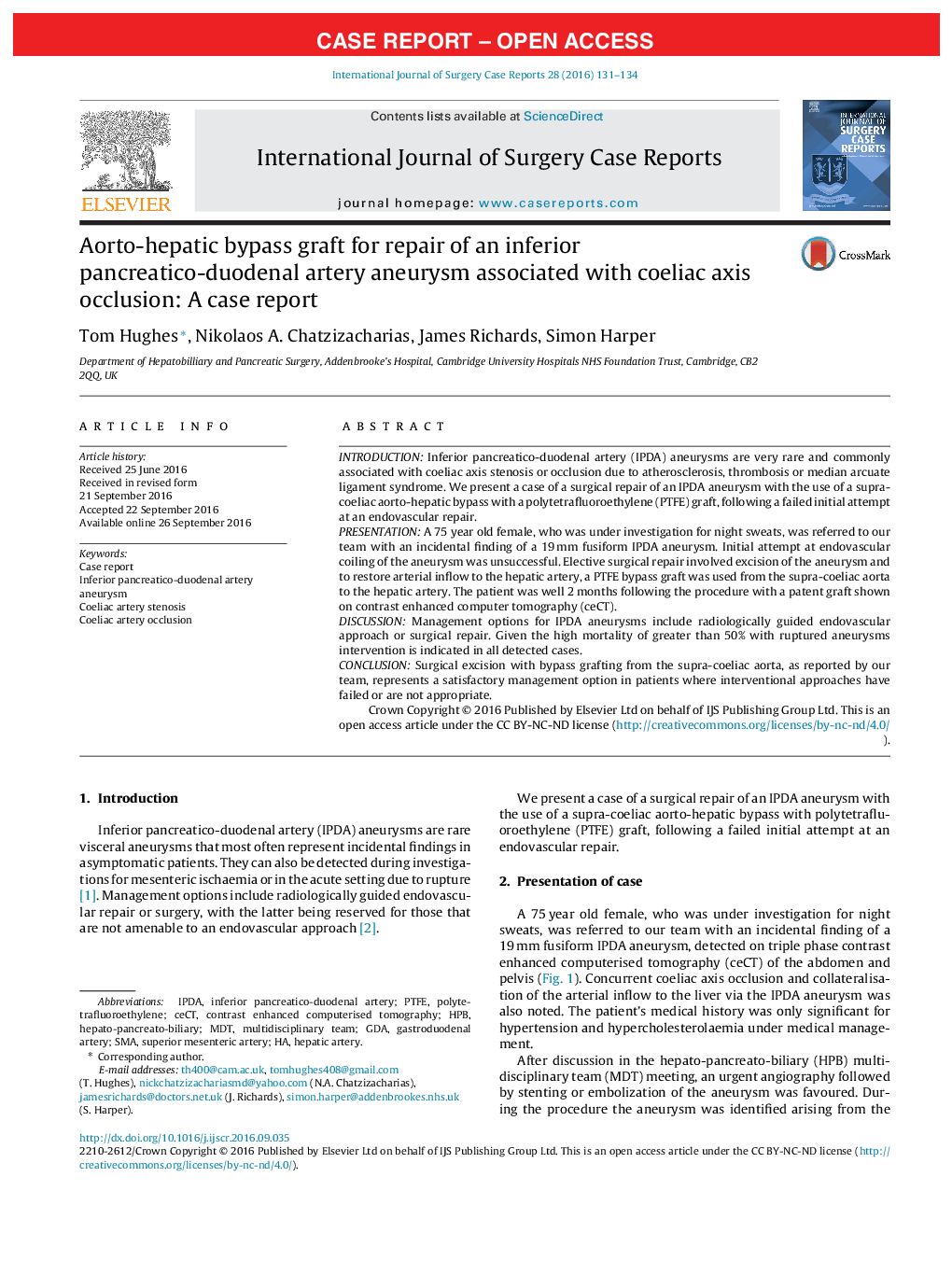| Article ID | Journal | Published Year | Pages | File Type |
|---|---|---|---|---|
| 4288148 | International Journal of Surgery Case Reports | 2016 | 4 Pages |
•IPDA aneurysms associated with coeliac axis occlusion are rare.•Management includes radiologically guided endovascular approach or surgical repair.•Given mortalities of greater than 50% with rupture, intervention is indicated.•We present a case of a surgical repair with a supra-coeliac aorto-hepatic bypass.
IntroductionInferior pancreatico-duodenal artery (IPDA) aneurysms are very rare and commonly associated with coeliac axis stenosis or occlusion due to atherosclerosis, thrombosis or median arcuate ligament syndrome. We present a case of a surgical repair of an IPDA aneurysm with the use of a supra-coeliac aorto-hepatic bypass with a polytetrafluoroethylene (PTFE) graft, following a failed initial attempt at an endovascular repair.PresentationA 75 year old female, who was under investigation for night sweats, was referred to our team with an incidental finding of a 19 mm fusiform IPDA aneurysm. Initial attempt at endovascular coiling of the aneurysm was unsuccessful. Elective surgical repair involved excision of the aneurysm and to restore arterial inflow to the hepatic artery, a PTFE bypass graft was used from the supra-coeliac aorta to the hepatic artery. The patient was well 2 months following the procedure with a patent graft shown on contrast enhanced computer tomography (ceCT).DiscussionManagement options for IPDA aneurysms include radiologically guided endovascular approach or surgical repair. Given the high mortality of greater than 50% with ruptured aneurysms intervention is indicated in all detected cases.ConclusionSurgical excision with bypass grafting from the supra-coeliac aorta, as reported by our team, represents a satisfactory management option in patients where interventional approaches have failed or are not appropriate.
